Top 11: Best Things to Do in Normandy
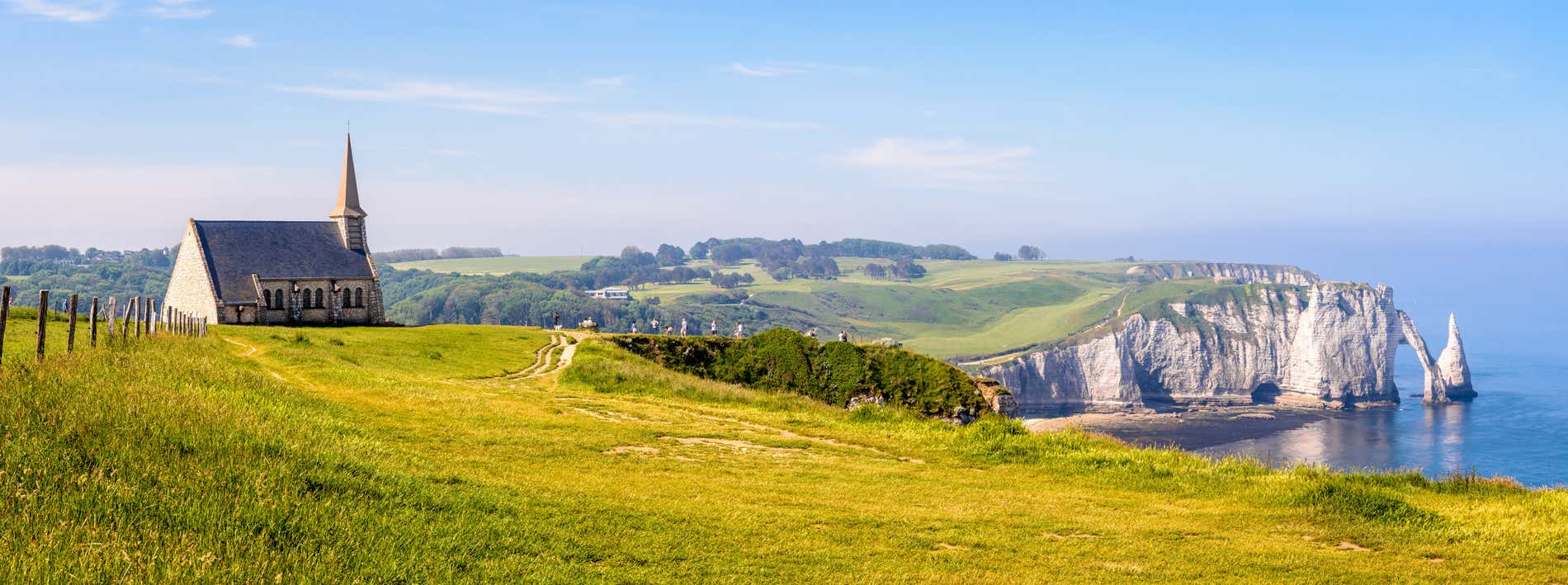
Known for its scenic coastline, Viking origins, and crucial role in World War II, Normandy is a historic and culturally rich region in northwestern France that captivates everyone. Wondering what to do in Normandy? You’ve come to the right place! Here at Civitatis, we’ve gathered all the best things to do for you to make the most of your trip in Normandy. Charming villages, dramatic cliffs, and historic beaches await!
The Best Things to Do in Normandy
1. Be Enchanted by the Magical Mont-Saint-Michel
Our list of the best things to do in Normandy has to begin with one of France’s most strikingly beautiful and iconic landmarks, Mont-Saint-Michel. Sitting on the border with Brittany, it’s famous for its extreme tidal variations—the difference between high and low tide can be over 46 feet (14 meters)! In fact, the fast tides have inspired local legends of pilgrims being swept away. This natural phenomenon makes the island all the more magical!
Attracting over 3 million visitors a year, this island was listed as a UNESCO World Heritage Site in 1979 for its unique aesthetic and importance as a religious site. Mont-Saint-Michel was originally a strategic fort, and it later became a major pilgrimage site in the 8th century. During the French Revolution, it was used as a prison, earning the nickname “Bastille des mers,” or “Bastille of the Sea.”
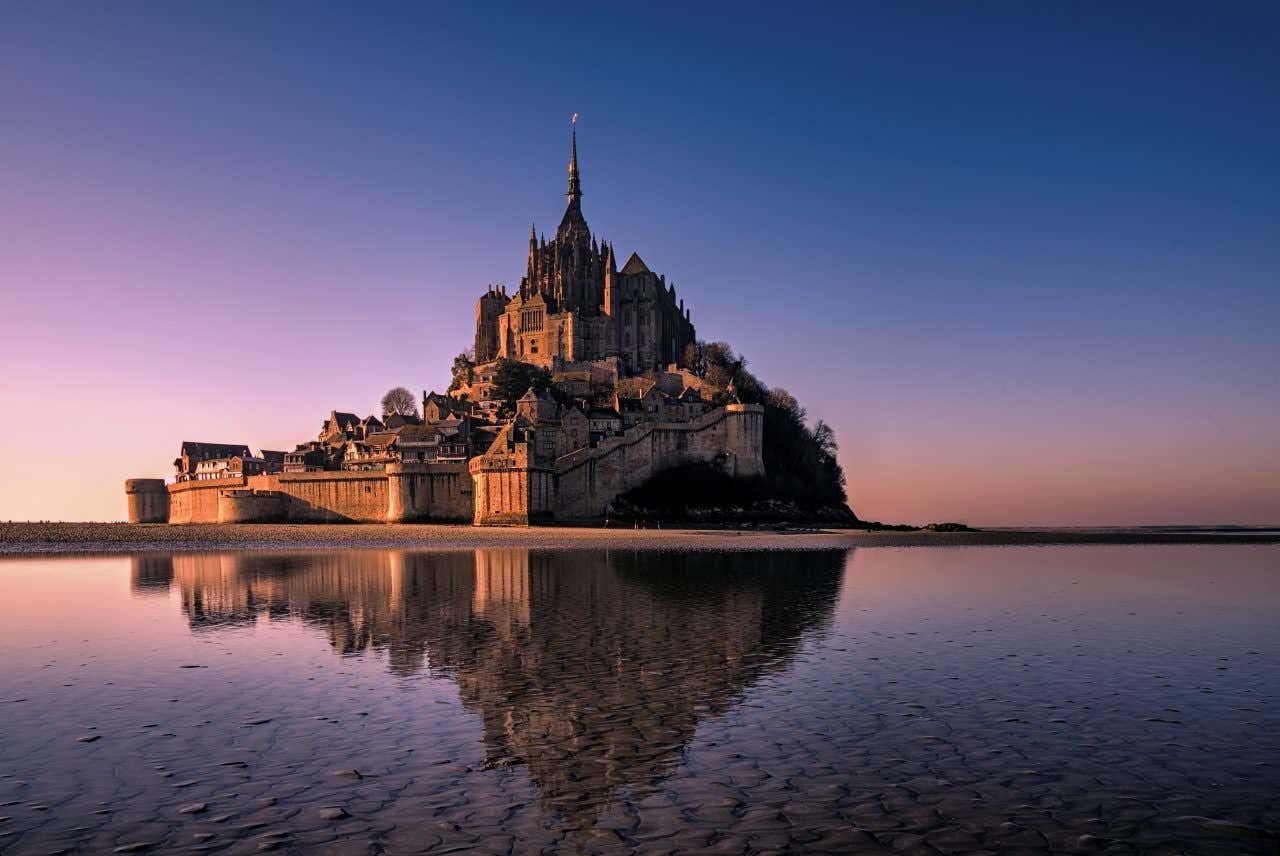
The world-famous Mont-Saint-Michel Abbey crowns the rocky island, a medieval masterpiece featuring a mix of Romanesque, Gothic, and Flamboyant styles. If you book this ticket to the Mont-Saint-Michel, you’ll have the chance to discover one of the most visited cultural sites in France. You’ll be mesmerized by its grand halls, cloisters, chapels, and a refectory with gorgeous views of the sea. Did you know it’s said that the castle in Disney’s Tangled was inspired by Mont-Saint-Michel? You can stroll around the city’s cobblestone streets and admire its medieval architecture, as well as visit its abbey with this day trip to Mont-Saint-Michel, departing from Bayeux.
Pro tip for foodies: stop at the legendary restaurant and hotel La Mère Poulard to try the famous Omelette de la mère Poulard. This giant and thick omelette is made in hand-hammered copper bowls and cooked over an open fire, resembling a soufflé more than a traditional omelette. You won’t regret it!
2. Stroll Around Claude Monet’s Gardens in Giverny
Another must in Normandy is to visit Giverny. This picturesque village is known as the place where Claude Monet spent the last years of his life and where he found inspiration for some of his greatest masterpieces. Giverny is a must-see destination for art lovers and nature enthusiasts alike, as you can see the Fondation Claude Monet, which manages the artist’s house and gardens.
This magical site is the second most visited in Normandy after Mont-Saint-Michel. These living works of art have two gardens to explore: the Clos Normand flower garden, filled with roses, poppies, tulips, and more; and the water garden, with its iconic Japanese bridge and lily pond surrounded by bamboo and weeping willows. This is where Monet painted his famous Water Lilies series! If you visit the Fondation Claude Monet in spring and summer, you’ll witness the blooming flowers—a spectacular explosion of colors straight out of an Impressionist painting.
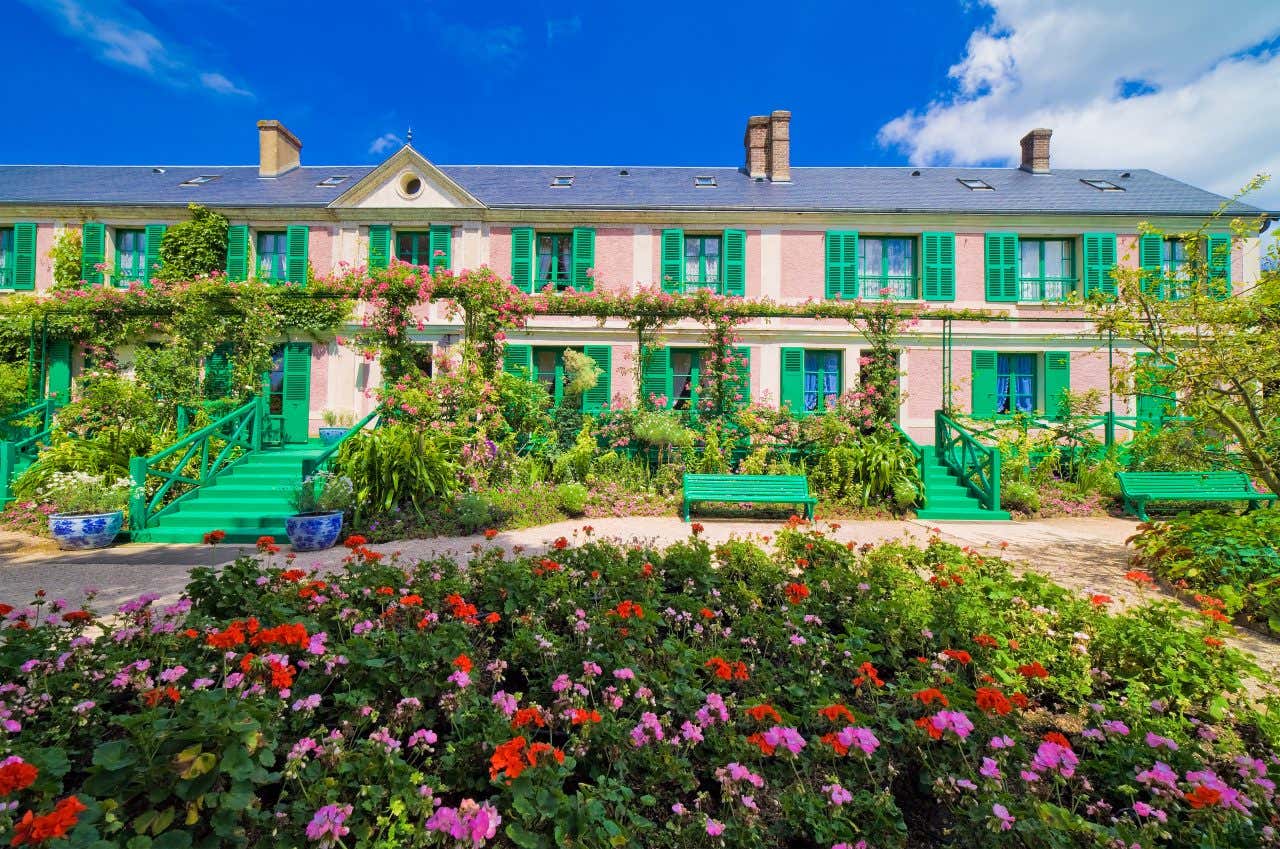
Monet’s house is just as charming, with its distinctive pink facade and green shutters. Inside, you can see the artist’s studio, bedrooms, bright yellow dining room, and blue kitchen. They remain decorated with Monet’s personal taste! Just a short walk from this site, you’ll find the Musée des impressionnismes Giverny, a museum that dives deeper into the Impressionist movement, featuring exhibitions that highlight Monet’s work.
3. Visit the Historic D-Day Beaches
The Normandy landings or D-Day beaches were the historic landing sites on June 6, 1944—one of the pivotal moments of World War II and the largest seaborne invasion in history. On that day, thousands of Allied forces launched a massive invasion of Nazi-occupied France by landing on the beaches of Normandy. This event marked the start of the liberation of France and Western Europe from Nazi control. Today, the D-Day beaches are preserved as places of remembrance and education.
To fully understand the significance of this historic day, you can visit the Normandy landings on a private motorcycle with a sidecar. On this tour, you’ll visit Arromanches, where you’ll see parts of Port Mulberry, one of the artificial ports built by the Allies to bring supplies for their troops after D-Day. You’ll also stop at the Normandy American Cemetery and Memorial, set on a cliff overlooking Omaha Beach. This peaceful and moving site honors all those who gave their lives on D-Day and throughout World War II.
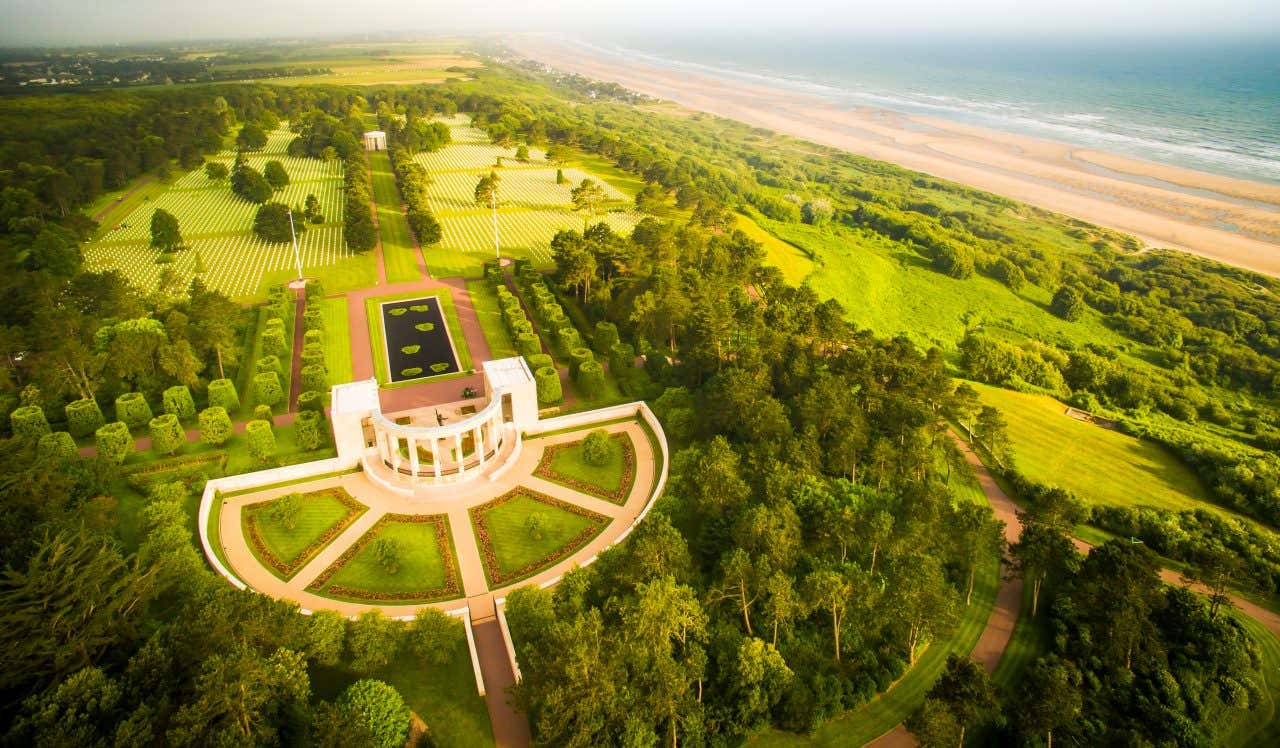
4. Learn About Joan of Arc’s Legacy in Rouen
Once one of the largest and most important cities of medieval Europe, Rouen is a historic and picturesque city in Normandy, as well as the provincial capital. The town is known for its deep ties to both French history and the story of Joan of Arc.
Here, you’ll find the Rouen Cathedral, famous for its intricate carvings and three stunning towers, each in a different style: the Saint-Romain Tower, the Butter Tower, and the Lantern Tower. Did you know this cathedral was built and rebuilt over more than 800 years? And that it was famously the subject of a series of Impressionist paintings by Claude Monet?
You’ll love strolling along the narrow, winding cobbled streets filled with half-timbered houses, quaint shops, and cafés in the Old Town. In this area, you’ll see the famous Gros-Horloge, a beautiful 14th-century astronomical clock set in a Renaissance arch. It has one of the oldest mechanisms in France!
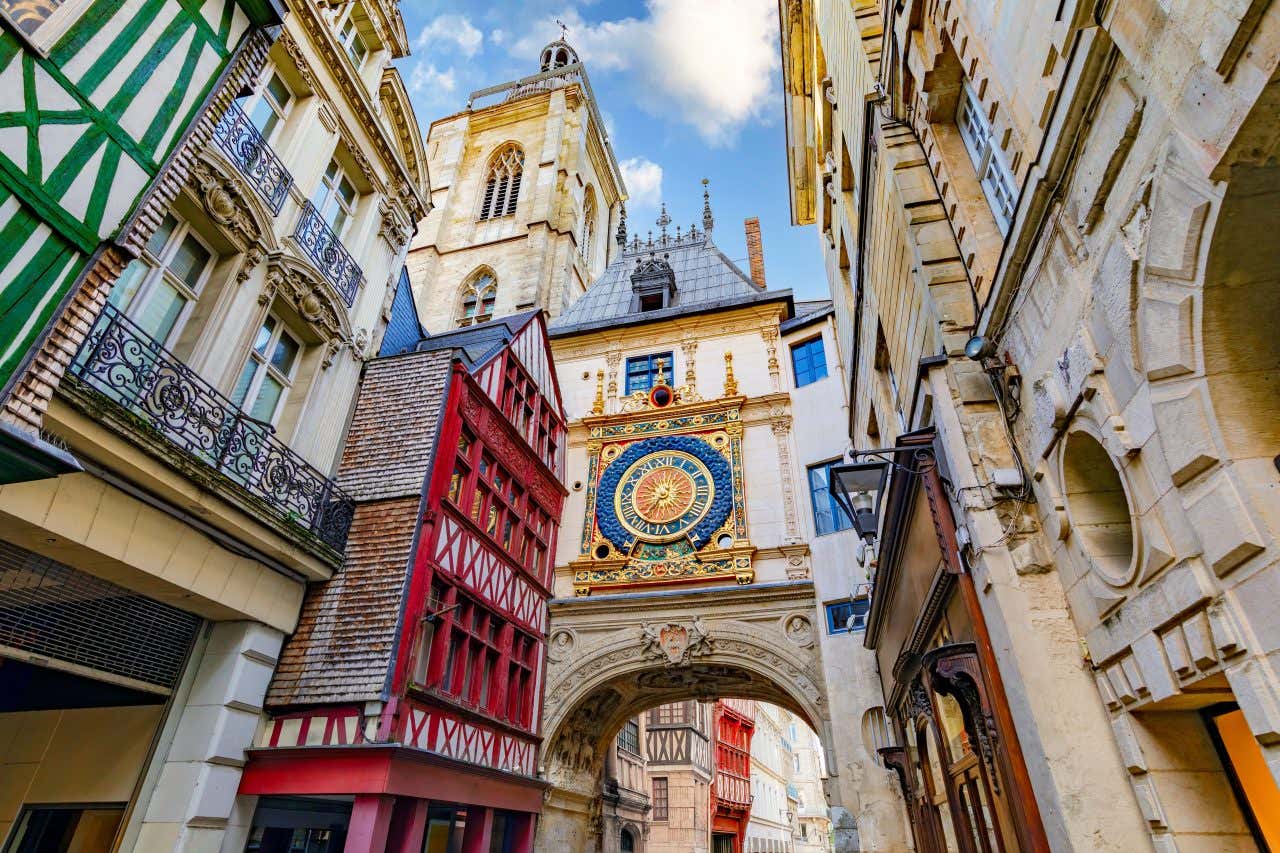
There are also many museums in Rouen, as the city has long been a center for artists, like the Rouen Ceramic Museum and the Musée des Beaux-Arts de Rouen (Rouen Museum of Fine Arts). This is the most famous museum, showcasing works by Caravaggio, Rubens, Delacroix, Velázquez, Monet, Duchamp, and more.
You’ll also find the Church of Saint Joan of Arc in the center of the Place du Vieux-Marché, the old market square. This is the place where Joan of Arc was tried and tortured in 1431, and you’ll see a nearby cross marking the spot. Today, next to the church, there’s a bustling market perfect for trying the finest local flavors. Interested in exploring Rouen? Join us on a private guided tour to explore the top landmarks and learn about the city’s rich history. It’s a must-see!
5. Explore the Town of Honfleur
Often described as one of the most picturesque towns in France, Honfleur is a charming and historic Norman gem known for its artistic heritage. Impressionist artists like Claude Monet, Johan Jongkind, and Eugène Boudin (who was born here) have famously painted the town and its skies. Here, you’ll find many galleries showcasing works by local and regional artists.
Honfleur’s old harbor and the heart of the town is the Vieux Bassin. This port is lined with slim, colorful buildings that have inspired countless artists with its changing light and reflections. It’s the perfect spot for a lovely stroll and for tasting the town’s famous fresh oysters, mussels, and scallops.
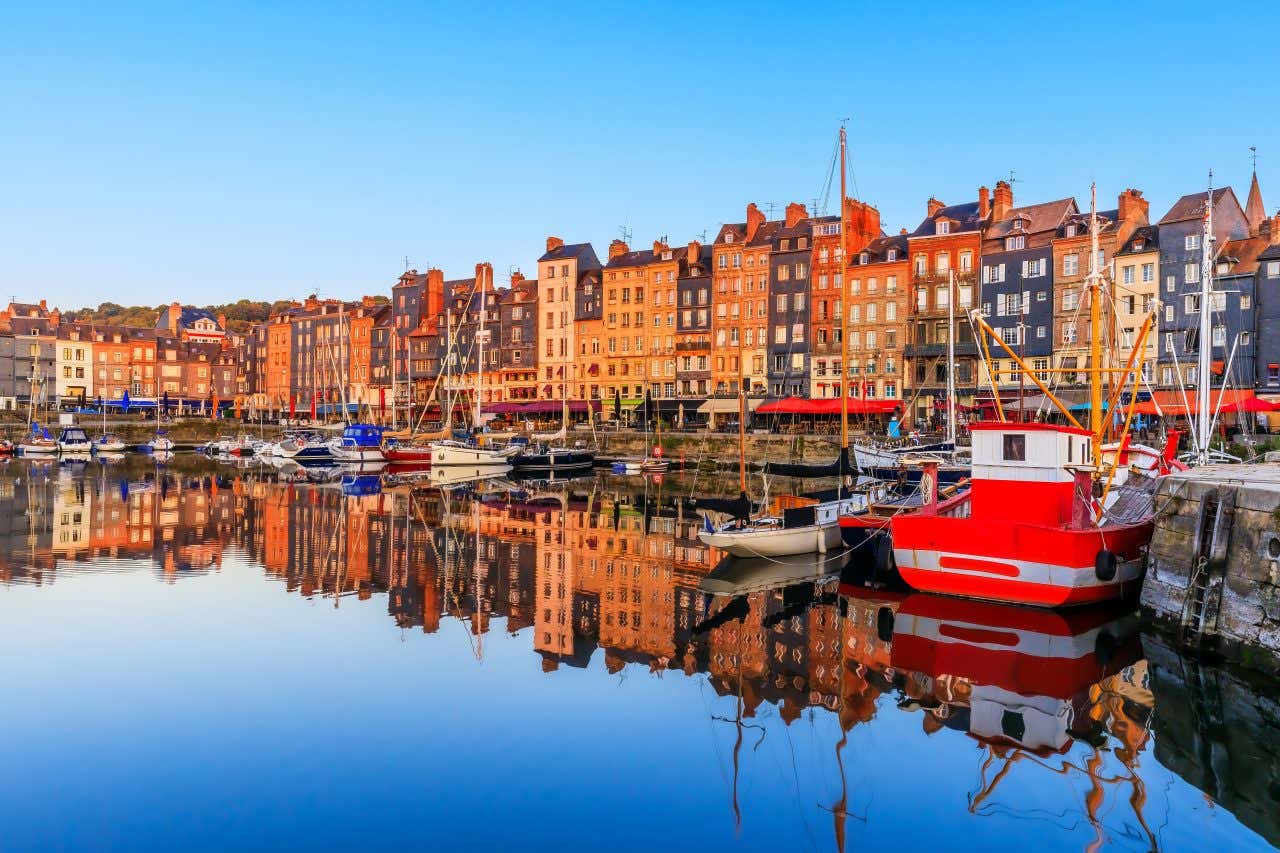
Honfleur’s most renowned landmark is Sainte-Catherine’s Church, the largest wooden church in France with a roof resembling an upside-down ship. This church is found in the Place Sainte-Catherine, where you can also visit a Saturday market with stalls selling cheeses, meats, seafood, cider, and pastries. You’ll also see the Gothic-style Église Saint-Étienne (St. Stephen’s Church) here, the oldest church in the city, now home to the Naval Museum. Explore Honfleur with a private sidecar tour to see the city’s most important landmarks. Or, if you prefer a more eco-friendly experience, you can check out this bike tour of Honfleur, where you’ll cycle around the famous port while soaking up Honfleur’s unique charm.
6. Admire the Towering Cliffs of Étretat
Located on the Alabaster Coast in northern Normandy, Étretat is famous for its spectacular sea cliffs and natural rock formations, considered one of the region’s most breathtaking natural wonders. These towering white chalk cliffs, carved by time into striking shapes and arches, rise dramatically over the English Channel.
These cliffs have inspired many painters, especially Claude Monet, Gustave Courbet, and other Impressionists, who captured their changing light and colors. French writer Maurice Leblanc, creator of Arsène Lupin, the fictional gentleman thief and master of disguise, lived here and also features Étretat in his work. In fact, Leblanc even set one of Lupin’s adventures inside the cliffs!
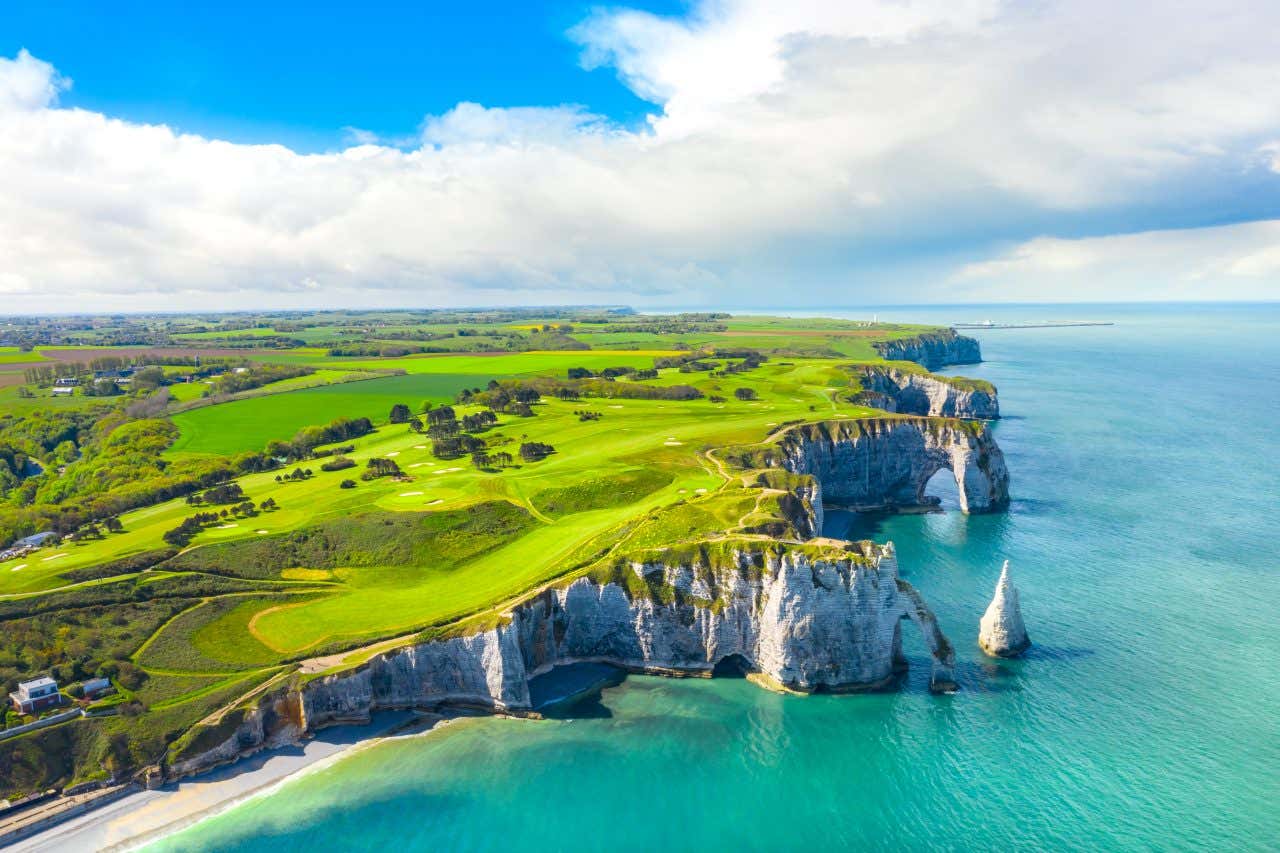
Visiting Étretat is one of the best things to do while in Normandy. If you love nature, you can hike the cliff paths and take in the incredible views of the coastline, or you can walk to the sea caves and tide pools. The town of Étretat itself is a charming one, with old seaside villas, art galleries, and seafood restaurants. Plus, you can visit The Étretat Gardens to enjoy sculptures, landscape designs overlooking the English Channel, and temporary exhibitions from invited artists.
Fun fact: Étretat holds a great and still unexplained mystery in the world of aviation. Did you know it’s the last place in France where L’Oiseau Blanc (The White Bird) was seen? This biplane disappeared somewhere over the Atlantic Ocean in 1927, when pilots Charles Nungesser and François Coli attempted to make the first non-stop flight from Paris to New York City. To this day, memorials in Étretat commemorate their daring effort.
7. Discover the Mémorial de Caen
Rich in history and resilience, Caen is a city shaped by its deep medieval roots and wartime past, with the Orne River adding charm as it winds through the city. Known as the favorite city of William the Conqueror, the first Norman king of England, Caen played a critical role in World War II during the Battle of Normandy. Despite suffering heavy bombings in 1944, the city has preserved its spirit, where you’ll find a mix of old and new, from ancient stone churches to a lively cultural scene.
Standing in the heart of the city, you’ll marvel at the Church of Saint-Pierre, with its ornate spire dominating Caen’s skyline. Nearby, you’ll find the Château de Caen, built by William the Conqueror, one of the largest medieval fortresses in Europe. He also ordered two stunning abbeys to be built: the Abbey of Saint-Étienne, also known as Abbaye aux Hommes (“Men’s Abbey”), where he is buried; and the Abbey of Sainte-Trinité, or the Abbaye aux Dames (“Ladies’ Abbey”), where his wife, Matilda of Flanders, is laid to rest.
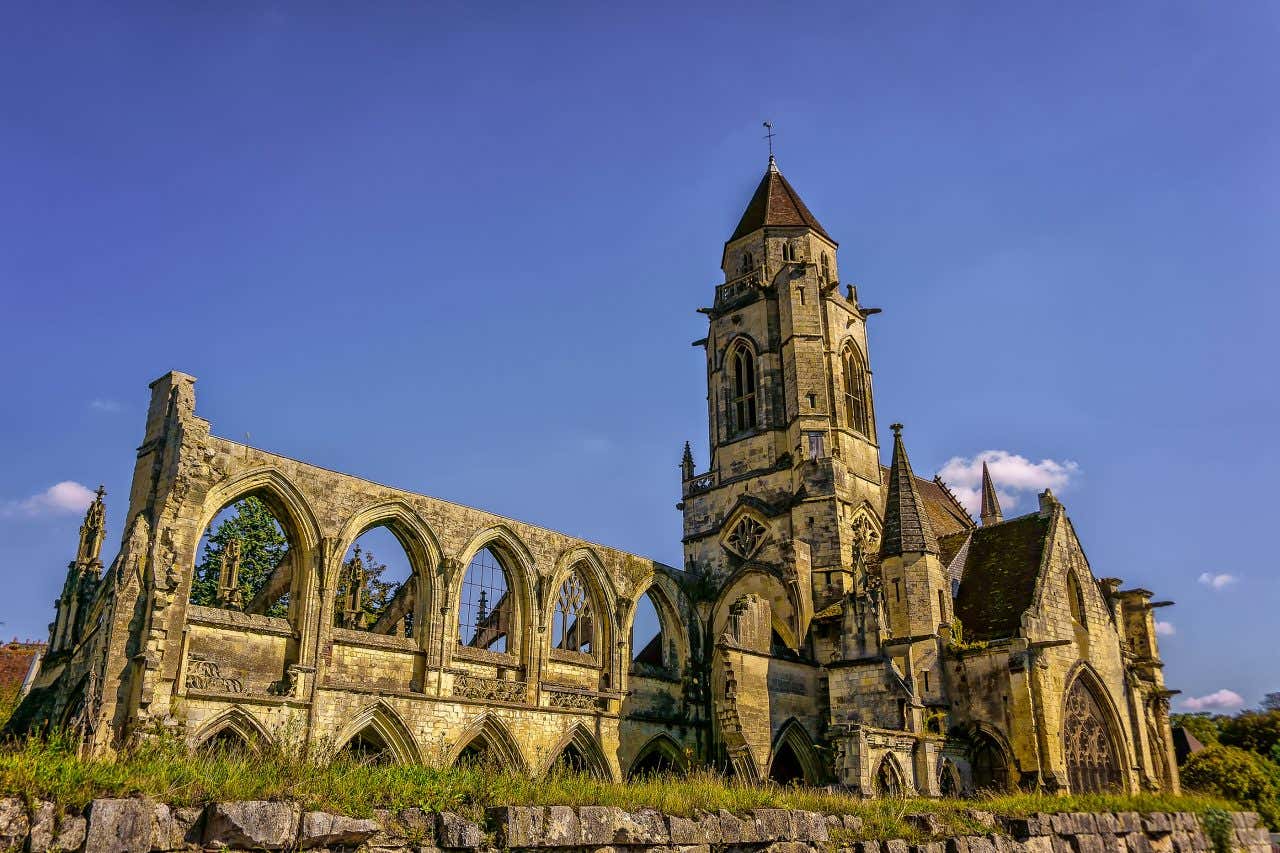
You’ll love getting lost in the Jardin des plantes de Caen, the city’s botanical garden. In this garden, you can admire its large collection of trees, native plants of Normandy, a greenhouse of about 1,500 exotic species, and more. Caen even has a theme park, Parc Festyland, with a 1066 era theme! The city is also home to one of the most comprehensive memorials and museums in Europe, the Mémorial de Caen.
You can visit this immersive museum dedicated to peace and commemorating World War II and the Battle for Caen if you book this Mémorial de Caen ticket. Looking to dive into the history of the Normandy landings in-depth? Check out this day pass, including a D-Day tour and admission to the Mémorial de Caen. To enjoy this museum along with other ones in the city, we also recommend you purchase the Caen la Mer City Pass. It’s the perfect plan for history and art lovers!
8. Marvel at the 11th-Century Tapestry in Bayeux
Bayeux is a beautiful and historically rich town that offers a unique blend of medieval charm and wartime remembrance. The town’s crown jewel and what it’s best known for is the Bayeux Tapestry, displayed in the Bayeux Tapestry Museum. This nearly 230-foot (70-meter) long and 20-inch (50-centimeter) tall embroidered cloth depicts the events of the Norman Conquest of England in 1066, ending with the famous Battle of Hastings. It’s over 950 years old!
This town is also famous for being the first town liberated after D-Day in World War II. Here, you can find the Memorial Museum of the Battle of Normandy, offering a deep dive into the Normandy landings and the fight for liberation, and the Bayeux War Cemetery, the largest World War II cemetery in France, with over 4,648 burials.
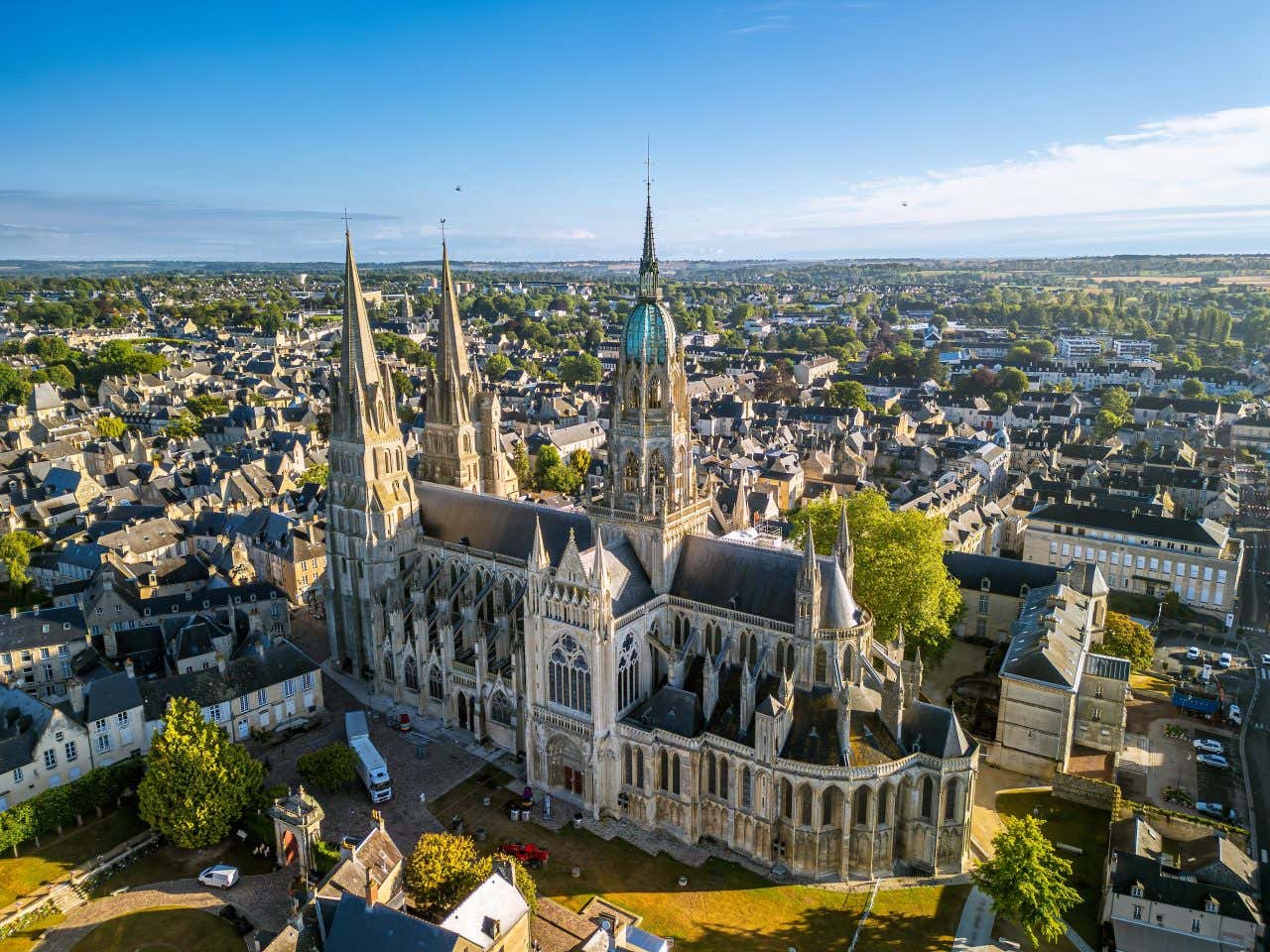
Bayeux miraculously avoided serious damage from the D-Day landings, which you can see with its preserved and charming historic center, featuring cobbled streets, timber-framed houses, and flower gardens. At its heart stands the Cathedral of Our Lady of Bayeux or Bayeux Cathedral, a designated monument historique in France. Dominating the town’s skyline, this beautifully preserved, stunning Gothic masterpiece with impressive stained-glass windows was said to be the original home of the Bayeux Tapestry.
9. Go Behind the Scenes of Normandy’s Calvados
About 30 minutes from Caen is the charming town of Pont-l’Évêque, located in Normandy’s Calvados department. This area is a true haven of nature made up of rolling green hills and charming little farms. The region’s peaceful scenery is perfect for those looking to relax or enjoy outdoor sports like hiking and cycling.
Pont-l’Évêque is famous for its cheese, one of Normandy’s oldest and most iconic cheeses. It’s also part of the Normandy Cider Route, where you can visit distilleries and taste apple-based products like cider and Calvados brandy. If this sounds like a fantastic plan for you, don’t miss booking your ticket to the Calvados Experience. You’ll learn all about the fascinating process behind Normandy’s iconic apple brandy from start to finish. Plus, you’ll enjoy a tasting of this exquisite drink accompanied by appetizers. Bon appétit!
10. Check Out the Modern Architecture of Le Havre
Sat at the mouth of the Seine River, Le Havre is a major port city that was nearly destroyed during World War II. Luckily, it was later rebuilt from the ground up by architect August Perret. His vision of open spaces and harmonious use of light listed Le Havre as a UNESCO World Heritage Site in 2005.
You’ll see why the city is celebrated for its bold 20th-century urban architecture when you walk through Le Havre’s center. Here, you’ll admire St. Joseph’s Church, designed by Perret, a towering modernist landmark with a 351-foot (107-meter) lantern tower. Another must-see is the House of Culture, a cultural center and theatre nicknamed “the Volcano” because of its shape. You can’t miss visiting the Docks district. This area, once a hub for shipping and trade, has been transformed into a trendy urban space full of galleries, cafés, and boutiques.
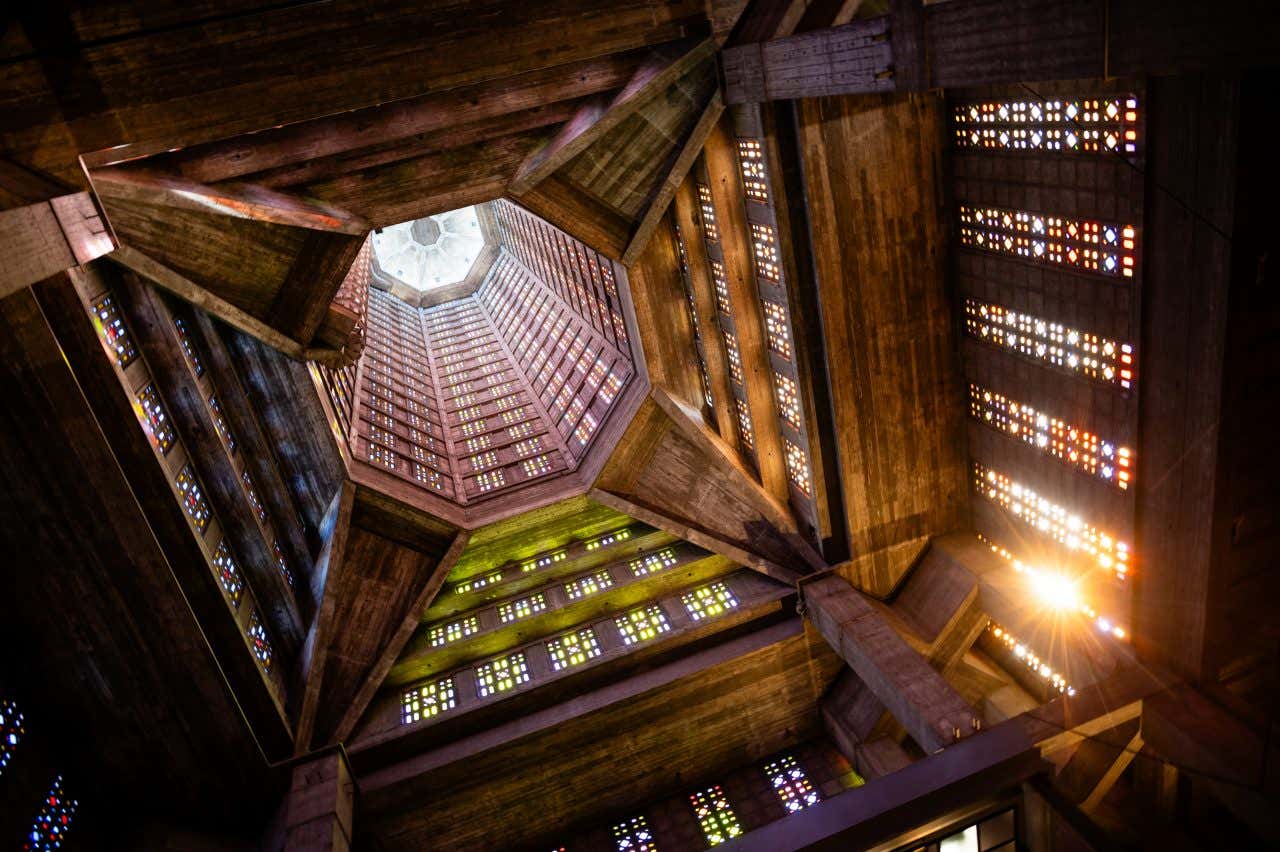
Five museums in Le Havre have been classified as Museums of France, an official label granted only to museums of high status. The most important of the five is the MuMa, the Museum of Modern Art André Malraux. This museum houses a collection of art from the late Middle Ages until the 20th century. Its collection of Impressionist paintings is the second largest in France, and you’ll find paintings by Monet, Renoir, and Dufy. With its museums, vibrant street murals, public sculptures, and year-round music festivals, Le Havre is without a doubt a city that lives and breathes art and culture.
11. See the Regional Nature Park of the Cotentin & Bessin Marshes
Here’s an underrated gem for nature lovers: the Regional Nature Park of the Cotentin and Bessin Marshes (Parc naturel régional des Marais du Cotentin et du Bessin). Spanning over 420,079 acres (170,000 hectares), this vast wetland is located in the departments of Manche and Calvados. It’s known for its biodiversity, peaceful landscapes, and stunning beauty, making it a paradise for birdwatchers and those looking for a break from touristy spots.
The Cotentin and Bessin Marshes are renowned for their flora and fauna, especially migratory birds. Here, you’ll see many species, such as herons, egrets, marsh harriers, and more. In its more secluded areas, you can spot beavers, otters, and red deer. The park is also home to unique plants like peat mosses, reed beds, and water lilies, along with wildflowers and orchids that paint the landscape with colors. It’s an ideal spot for photographers!
There are also tons of outdoor activities to do in the park. From hiking and cycling on the many winding trails to kayaking and boat rides through canals, creeks, and wetlands—this park offers something for everyone. You can even fish, visit cider farms, go horseback riding, and savor delicious oysters at an oyster farming site. If you’re seeking to escape into nature and enjoy plenty of activities outdoors, the Regional Nature Park of the Cotentin and Bessin Marshes is a must.
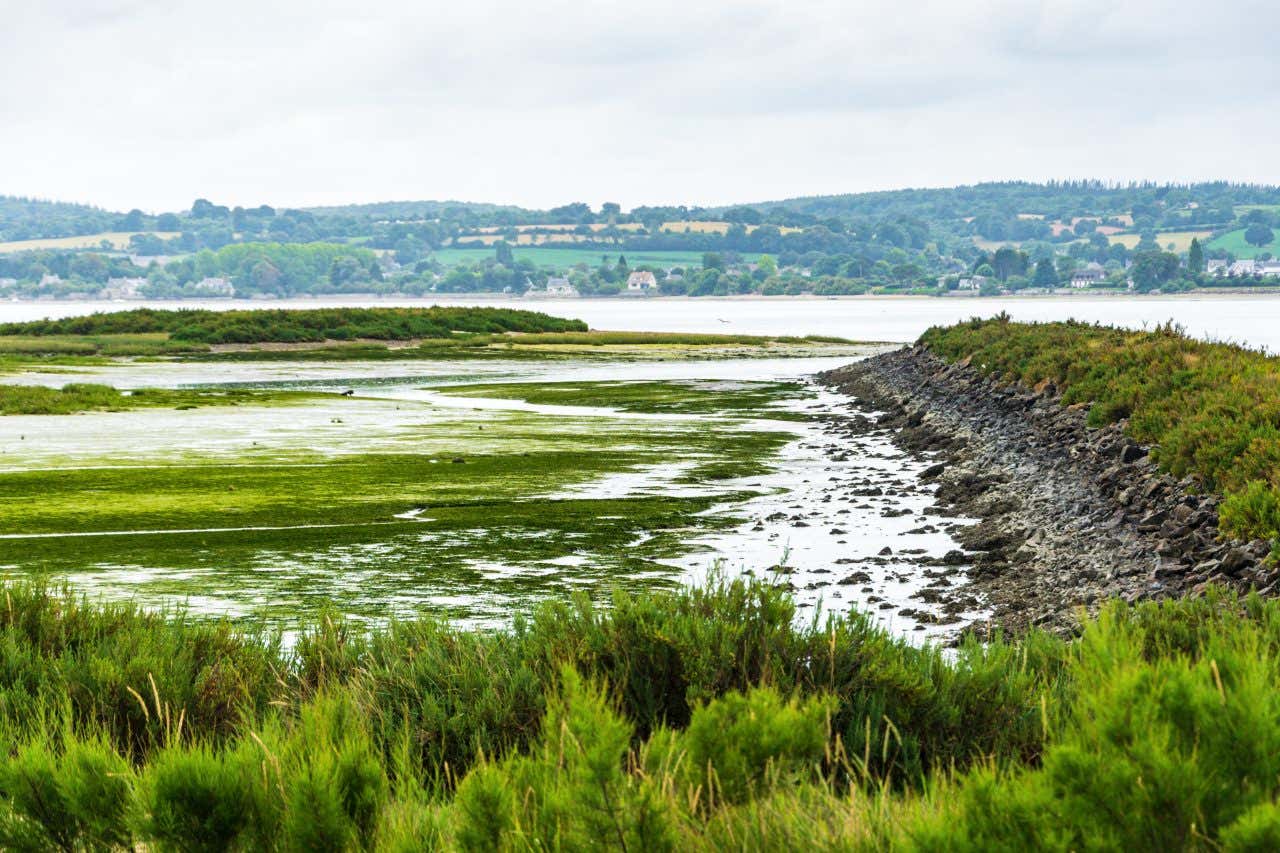
Whether you’re drawn by the echoes of D-Day on its historic beaches, the timeless beauty of Monet’s gardens, or the charm of the coast villages and countryside, Normandy offers something unforgettable at every turn. Ready to discover Normandy’s rich history and natural beauty? Check out all the activities available in Normandy with Civitatis and plan your perfect getaway!






